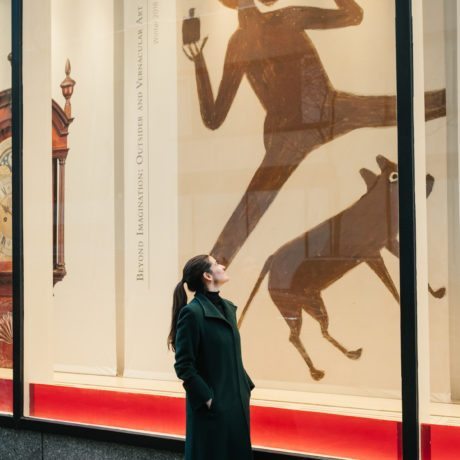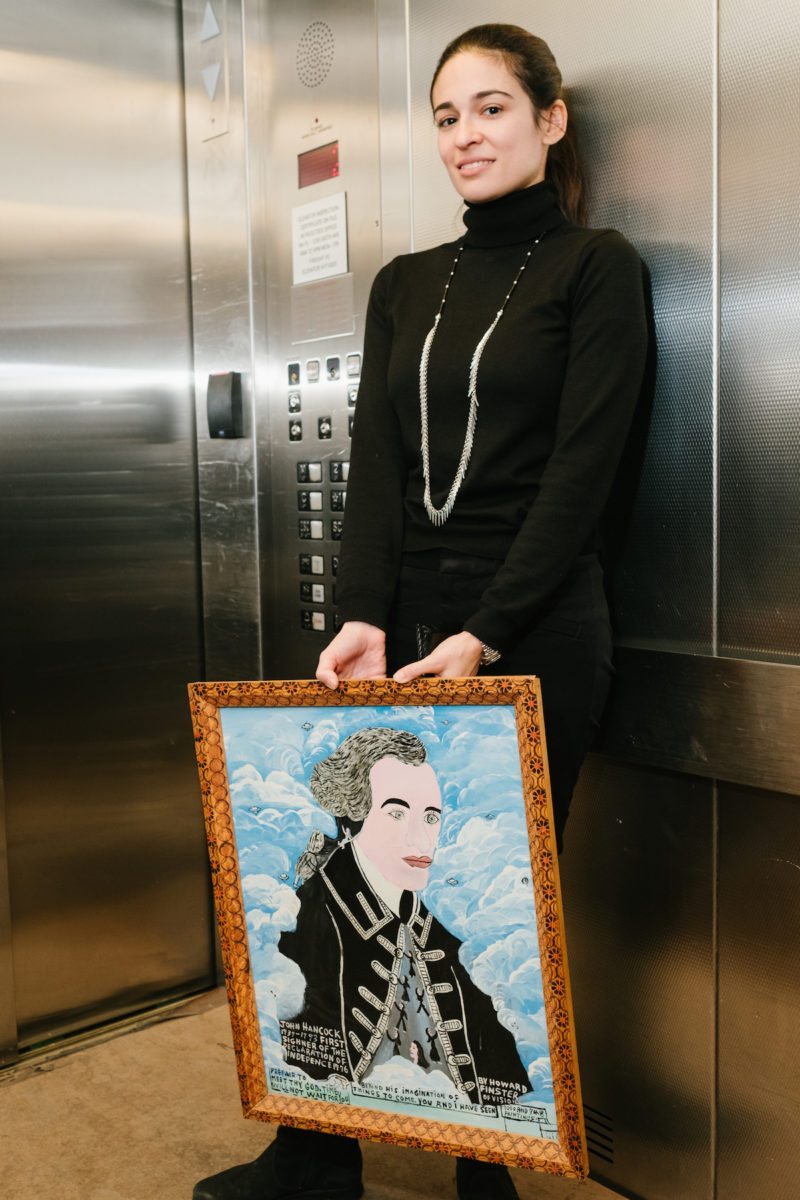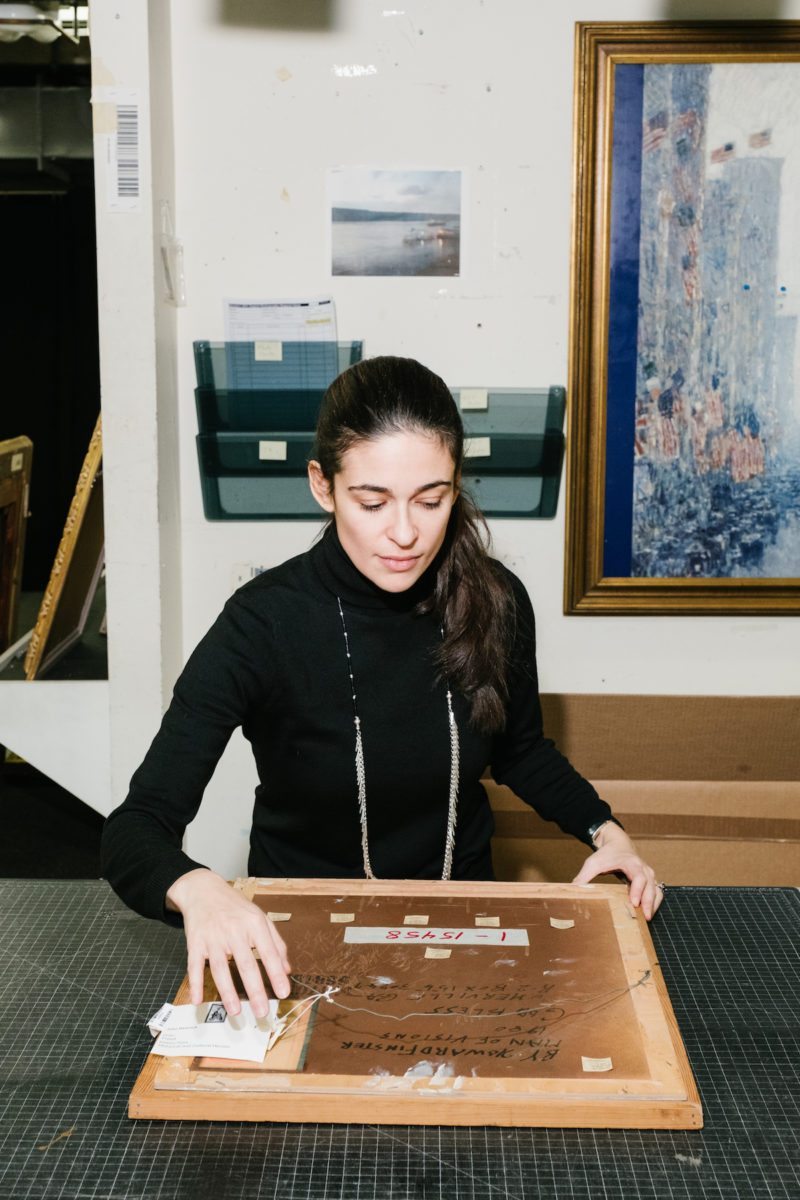
One of the great joys of my career at Christie’s is that there is no average day. Some weeks, I’m on the road visiting collectors and seeing exhibitions. Others, I’m in the office examining works for upcoming auctions or I’m putting together exhibitions for upcoming sales. One unifying feature is that I’m always looking at objects and talking with collectors.
In the weeks leading up to an auction though, a typical day might look like this: I have at least one cup of coffee when I get up, but never eat breakfast. I must admit, I’ve never been a morning person. I wear black trousers and jackets most days––while I hate the connotations of the dressed-in-black art dealer, I hate the psychic energy spent on clothing choices even more. Instead, I spend the first part of my day thinking through my upcoming meetings, art I need to examine and clients I’m going to see. I head into work on the subway (F or M train), and spend the morning sifting through new auction inquiries, speaking to collectors and creating installation plans for upcoming exhibitions.
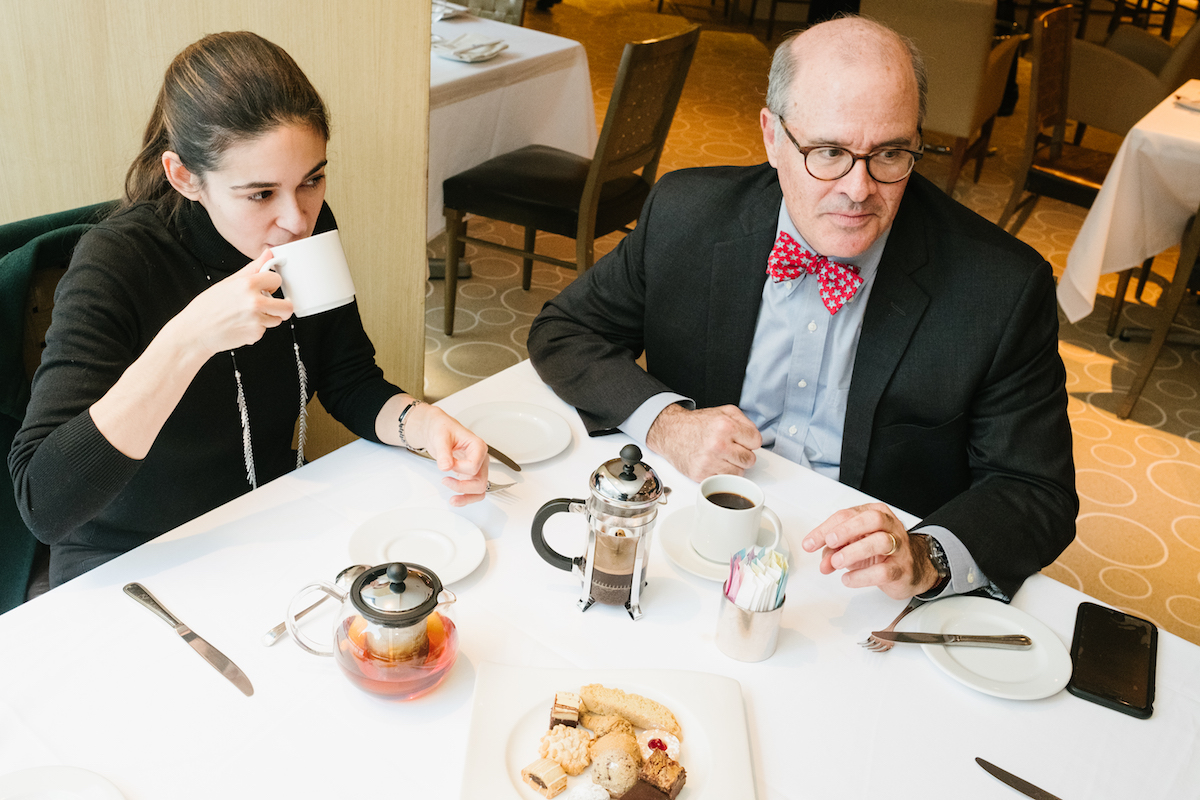
Lunch might be with clients at the Sea Grill or Brasserie Rulhmann. I tend to stay near Christie’s but enjoy having the break in my day to talk about art, collecting and life with people who love art like I do. At these lunches I’m reminded how lucky I am to work with and around folks who understand the importance of having art in their lives.
“Everything I do revolves around art, and playing matchmaker between a great object and a great art lover is still what gives me thrills.”
The best part of any day is undoubtedly when I make or facilitate a connection with an object. These connections come in various forms. I might see an amazing work that a collector wishes to include in an upcoming auction, or I might introduce a collector to a piece they would love to own. I might see a great work in a museum that clarifies an object we’re researching, or I might re-encounter a piece I haven’t seen in a long time. Everything I do revolves around art, and playing matchmaker between a great object and a great art lover is still what gives me thrills. And, of course, there is no feeling like a sale room success. I feel complete elation when a work I’ve researched and written about soars in an auction.
Colleagues also influence my day. Christie’s is a collaborative environment, and everything that happens here takes a village. In the weeks before an exhibition, many teams are at work to make the art look its best and to ensure a sale runs smoothly. They allow me to focus my pre-sale attention on the art itself, so I can engage with collectors and art lovers without distraction. I am constantly working with the amazing American decorative arts team, which supports the outsider art programme here at Christie’s, and I can rely on them at every step for advice and help.
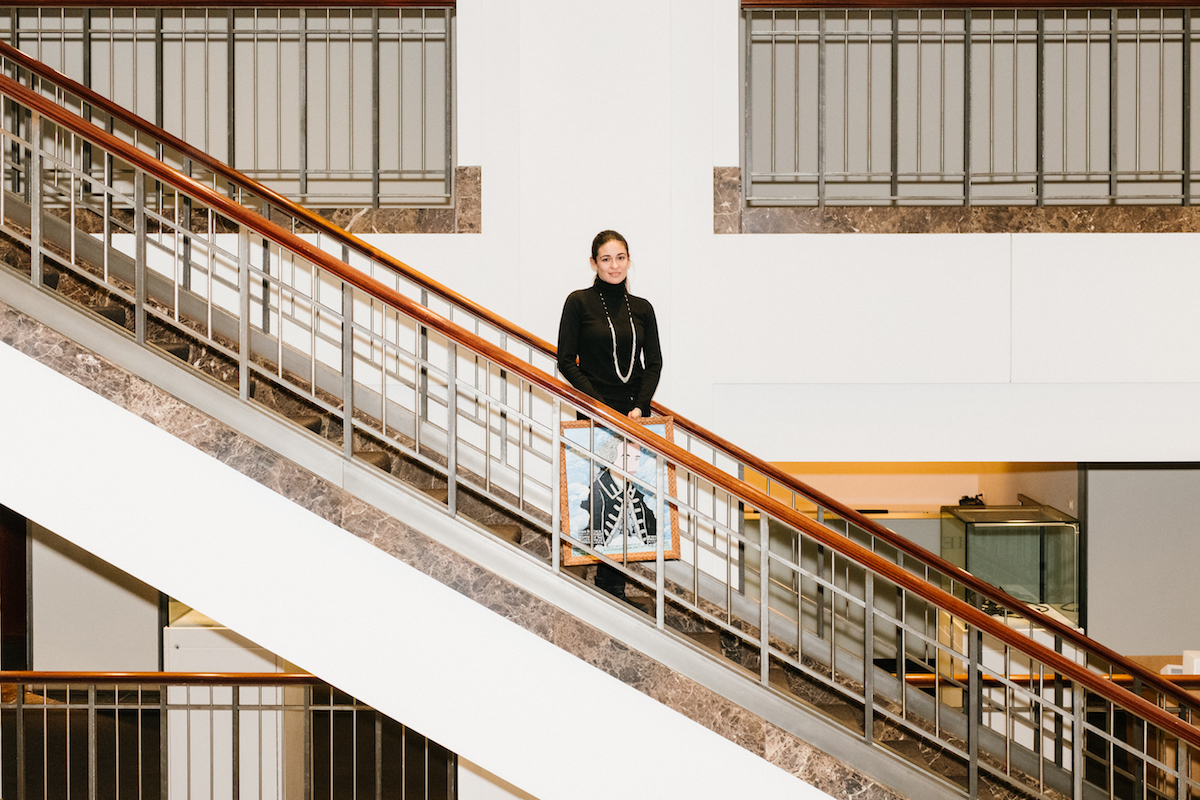
A major sale is a labour of love, and requires months (or years!) of preparation. First I work with collectors to find works for the auction that I believe will thrive in the current market. This is the most important stage of sale preparation, as an auction is only as good as the pieces included. After the consignment process we begin our catalogue and photography: we research every piece in our sales to ensure the work is authentic, and we consider provenance and exhibition history as well. For certain important objects, such as the Henry Darger in our January 2018 sale (estimate: $200,000–$400,000), we often write accompanying scholarly essays. And, of course, every work is photographed and reproduced in both a print catalogue and online.
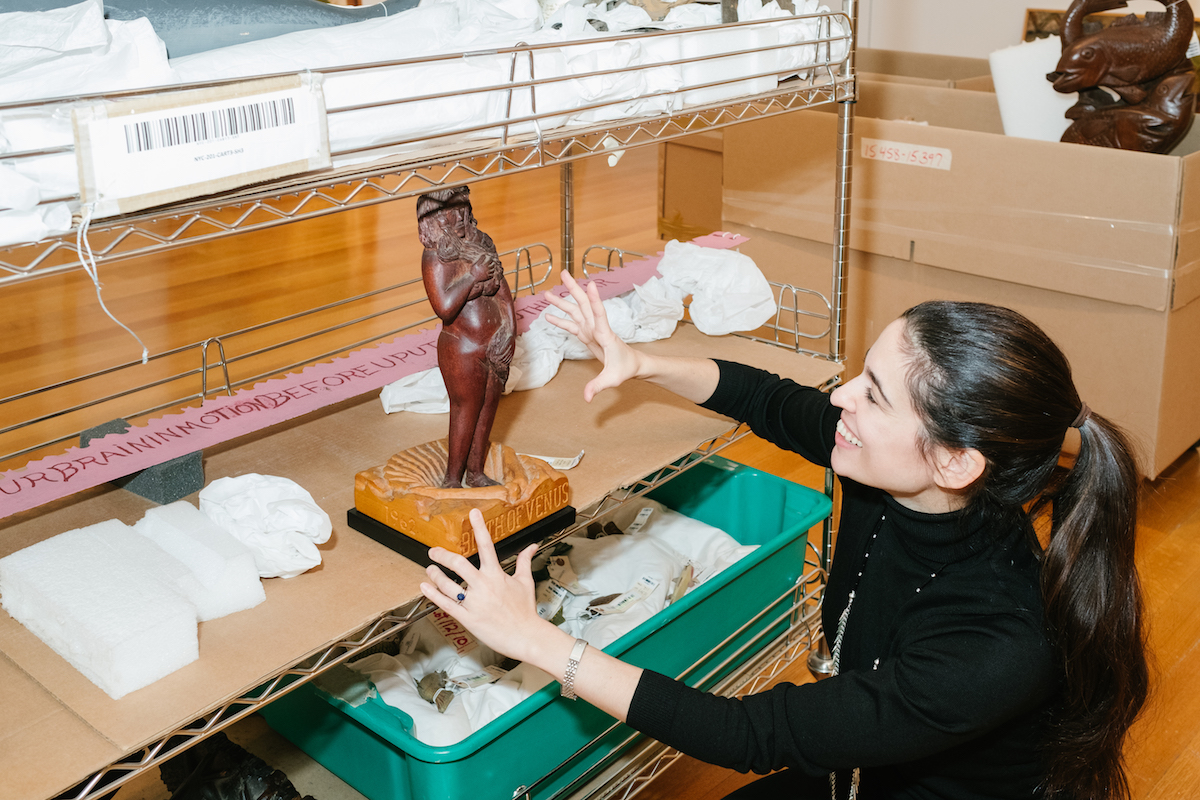
The next stages of the sale happen at a much faster pace. The catalogues are mailed and “go live” online and, a few weeks later, we mount an exhibition of the sale that is open to the public for a week before the auction. During the exhibition, collectors, students and scholars come see the works, examine them, ask questions and often tell me interesting things about the artists and works (it is a joy to learn from others in these settings). Christie’s hosts cocktail receptions for collectors and I go to related art fair openings, attend dinners and see all the people who come into town for the festivities.
“There’s a magic to walking at night in Manhattan, with the lights and the bustle. This time to myself allows me to reflect on the day, prepare myself for tomorrow and remember why I live on this frenetic, fantastic island.”
By the morning of the actual auction, I’m usually exhausted and running on adrenaline! I am not an auctioneer, but a phone bidder. So, I bid on behalf of clients who can’t be in the sale room in person. It is a lovely moment of bonding with collectors, and wonderfully fun if you win the piece on their behalf.
At the end of it all, whether leaving a gallery, restaurant or watering hole, I try to walk home. There’s a magic to walking at night in Manhattan, with the lights and the bustle. This time to myself allows me to reflect on the day, prepare myself for tomorrow and remember why I live on this frenetic, fantastic island. Manhattan has an energy and excitement that is truly unique. To work here is a joy and a privilege.
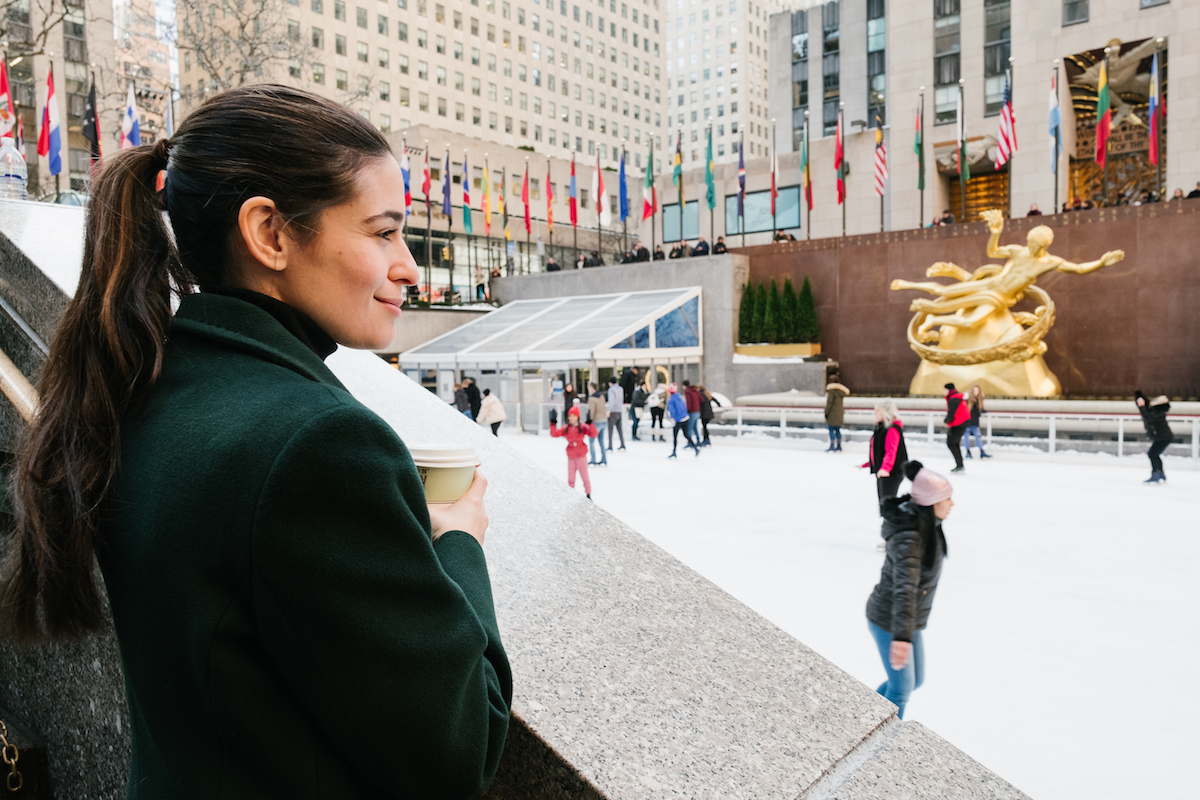
Since Christie’s is in Rockefeller Center, the area is always busy. We are in the centre of it all and convenient to both the Upper East Side and Chelsea galleries, as well as museums like the MoMA, the Met and the American Folk Art Museum. I think life is faster here in New York. There is always something happening, there are always collectors or art lovers visiting, and there are always fantastic exhibitions. I can’t imagine getting as much done anywhere else.
Photography © Donald Stahl
